The United States spends massively on programs to train and equip allied governments and militias to help fight the war on terrorism. When these programs work, they are far cheaper than deploying U.S. military forces, writes Dan Byman. But failures are common too, he warns. This post originally appeared on Lawfare.
The United States spends massively on programs to train and equip allied governments and militias to help fight the war on terrorism. The Government Accountability Office has reported that between 2009 and 2014, the United States spent an average of $275 million per year on training programs and that this figure more than doubled in 2015. Most of this money went to counterterrorism, with countries like Iraq, Jordan, and Tunisia benefiting in the Middle East, and Kenya, Niger, and Ethiopia benefiting in Africa. Beyond terrorism, some of the train and equip money went to help Ukraine and the Baltic states improve their armed forces amidst growing Russian aggression. The hope is that these programs will help allies better fight terrorists, police territories they liberate from their clutches, defend their borders against enemies, and ensure the rule of law—and in doing so, diminish any need for U.S. intervention down the road.
When these programs work, they are far cheaper than deploying U.S. military forces. U.S. officials, including Secretary of State John Kerry, often point to “Plan Colombia” as an exemplar of how such programs can eventually defeat rebels. In 2000, the U.S. launched an extensive effort to train and equip Colombian forces, improve their aerial mobility, and reduce coca cultivation. At the same time, U.S. forces pursued the softer side of conflict resolution, helping victims of violence and encouraging the government to protect journalists and recognize human rights abuses. The total cost topped $10 billion—high, but a fraction of the cost of U.S. wars in Afghanistan and Iraq, and far more successful.
Even so, Plan Colombia’s success is debated. Critics point out that the drug trade did not die but often simply shifted to nearby countries, human rights violations continued, and violence persisted at high levels for many years. Nevertheless, Colombia’s military improved dramatically—in fact, Colombian forces now often train those of other countries. Over time, the military made gains against the rebels, allowing the government to negotiate a peace deal on favorable terms (though voters recently repudiated it). Terrorism, murder, and kidnapping rates all fell, and cocaine production declined. In February, President Obama declared that, “the tide has turned.”
But failures are common too. Indeed, they seem more common than successes, though metrics for measuring progress in training programs are notoriously elusive and are often used inconsistently, if at all. Painfully, failure has recently shown up where it appears to matter most: fighting the Islamic State. In June 2014, roughly 1,500 Islamic State forces approached Mosul, but, rather than rebuffing their advance, the much larger Iraqi army forces there—perhaps 30,000 in total—simply fled. The United States had spent years and more than $25 billion dollars only to see its local allies collapse without a fight against a poorly armed and relatively small band of vicious terrorists. After that debacle, the United States tried again, training tens of thousands of Iraqi forces in recent months. But serious problems remain, and to date, only Iraq’s elite counterterrorism force is deemed a true success. Recent successes in Mosul relied heavily on Kurdish forces and Iranian-backed Shiite militias as well as U.S. air power—not the prowess of the newly trained Iraqi military.
The U.S. experience in Syria, however, almost makes the Iraq experience look good. The Syrian government remains a declared enemy, forcing the United States to look to various rebel groups to fight the Islamic State. One half-hearted military program, costing $500 million and designed to train at least 5,000 rebels, ended up producing perhaps five actual fighters; that’s $100 million dollars per fighter, a figure which makes the Six Million Dollar Man seem like an incredible bargain.
Why is failure so common? Part of the problem is that the United States often starts with damaged goods. Countries facing a major terrorism problem or insurgency often suffer from poor governance, divided societies, and deep economic problems: these weaknesses allow violence to flourish, and the violence itself can exacerbate these problems.
Societal divisions prove a particular problem. National identity in Iraq and Syria is weak, and citizens often only want to fight for their own communities and do not trust others. The national army is often viewed as a tool of the dominant community, not as an impartial force defending everyone. Some of the Iraqi army forces fighting to retake Mosul, for example, hang Shiite religious imagery from their vehicles—hardly a reassuring sight to the mostly Sunni inhabitants of Mosul. When pressure gets intense, integrated units often collapse, with forces defecting to militias representing their communities or deserting because they don’t want to be a tool of a rival group.
Further, rulers often lack legitimacy among many communities and, at times, even among their own. With the exception of Tunisia, all of the governments in the Middle East lack democratic legitimacy. Iraq is better than most, but many Sunnis and Kurds believe Prime Minister Haidar al-Abadi is merely the champion of Iraq’s Shiite population and even a tool of Iran. That’s a bit unfair to Abadi, but not totally off the mark either.
The lack of unity and the weak governmental legitimacy often lead rulers to politicize their militaries. Fearing a coup, they put loyalists in senior positions. Because loyalty is placed over competence, the rank-and-file soldiers are even less likely to fight, as they believe their officers do not deserve their respect.
Because of these problems, often the militias are more formidable than the national armies. Their soldiers are more loyal and trust their officers. In Lebanon, Hezbollah, which dominates the Shiite community, has long been recognized as more effective as a fighting force than the Lebanese Armed Forces. In Iraq, Shiite and Kurdish groups have done much of the heavy lifting against the Islamic State. Not surprisingly, in Syria, the United States has often worked with militias composed of local minorities such as the Kurdish People’s Protection Units (YPG), a group unpopular with Syria’s Arab majority but responsible for many of the gains there against the Islamic State.
Additionally, although the United States wants local forces to fight primarily against the Islamic State and other terrorist groups, local communities face what they see as bigger enemies: their own governments or rival communities. Sunni tribal forces in Iraq, for instance, at times fight jihadists but also oppose the central government. For this reason, applicants to one U.S.-backed training program for Syrians had to pledge to fight only the Islamic State, not the Assad government, which has killed far more Syrians than the jihadists.
[W]hile training programs can move the needle somewhat, they are rarely a replacement for other policies.
Corruption is also a problem at all levels. When the United States provides money to expand military forces without the ability to monitor them up close, locals have an incentive to try to milk Uncle Sam—often with the complicity of the government in question, which rewards local allies with opportunities to join in the corruption. The Iraqi army has tens of thousands of “ghost soldiers”—phantom troops who are only there on paper so their superiors can collect their salaries.
The unfortunate result is that while training programs can move the needle somewhat, they are rarely a replacement for other policies. If the United States wants to fight the Islamic State in Iraq and Syria without deploying large numbers of American ground troops, it must work with local forces it both has and has not trained. Even those forces trained frequently need embedded U.S. advisers to fight effectively. Further, air power, often in large quantities, will often be required to stop enemy forces from maneuvering or supplying forces.
In other words, training programs by themselves cannot secure victory. Those who see training programs as a way to minimize or avoid U.S. involvement altogether will be disappointed: they can supplement efforts to fight terrorists, but are not sufficient on their own.
The Brookings Institution is committed to quality, independence, and impact.
We are supported by a diverse array of funders. In line with our values and policies, each Brookings publication represents the sole views of its author(s).

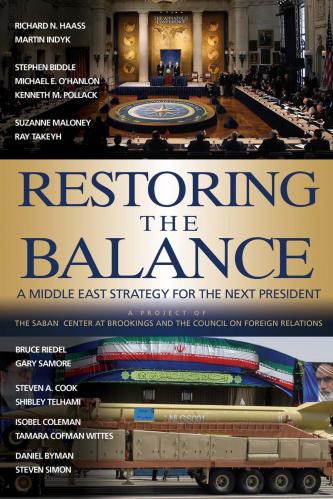

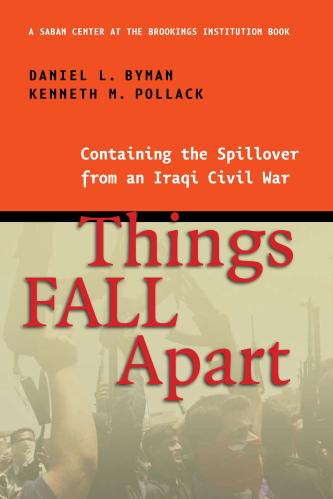
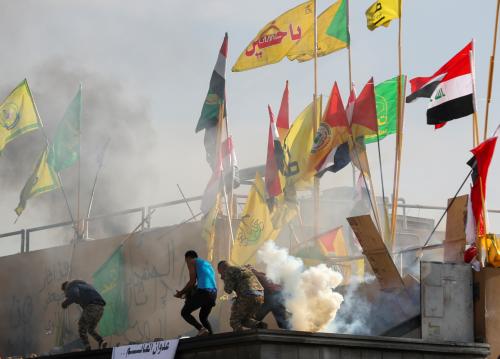
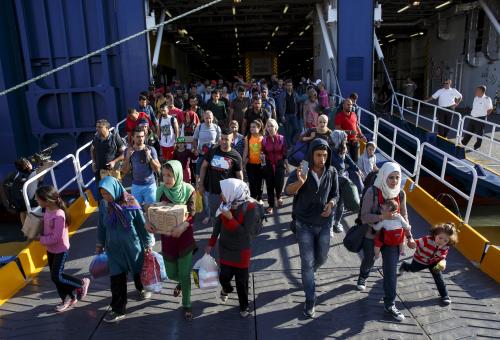
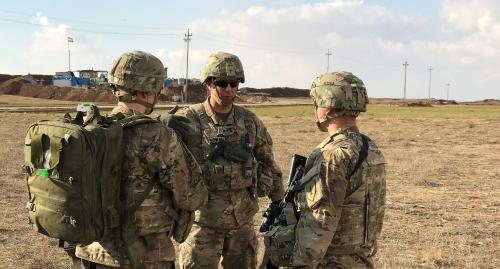



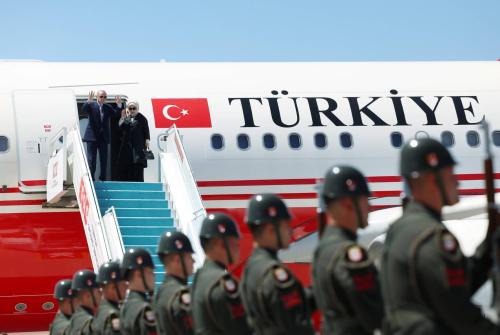
Commentary
Downbound training
November 29, 2016